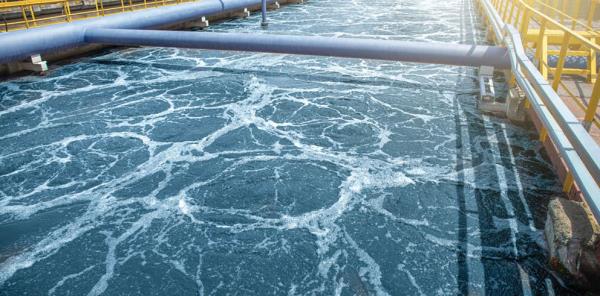04 April 2025

Lindsay Congreve, Head of Metering at Anglian Water
2010 saw the initial introduction of smart water meters in the UK; however, uptake continues to lag.
By March 2024, approximately 60% of households in England had water meters, but only 13% had smart meters. However, the Environment Agency has set out a plan to ensure that 48% of households have smart meters by 2030, 73% by 2040 and 76% by 2050.
Smart water meters are recognised as an improved technical solution to remedy the pressures on the water industry to improve responsiveness to water leakages and how they manage water supply more effectively. As well as this, a greater focus within the water industry has been placed on sustainability and efficient use of water.
This latter application for smart water meters is key in a region like the East of England, compared to other parts of the country, is under a great amount of pressure in terms of a lack of rainfall and an increasing population, which has squeezed resources. So, with the region officially being designated water-stressed, and said to be the driest in the country, it needs a long-term solution to solve the water crisis. Alarmingly, over a third of the water supply in the region is set to be lost by 2050.
Consequently, without long term planning, there will not be enough water to supply the region in the future. Smart meters are thus set to play a key role in how the water industry achieves resiliency through how they build out their Advanced Metering Infrastructure (AMI) in the industry within their asset management planning. The seventh Asset Management Period (AMP7) regulatory framework, which covers 2020-2025, focused on environmental protection and aimed to reduce leakages by approximately 15-20% by 2025. Looking into the future, the eighth Asset Management Period (AMP8), which is coming into effect in April 2025-2030, is focusing more on the environment, climate change and society, with reducing water leakages remaining as a top priority.
The goals of the AMP7 and AMP8 regulatory frameworks have driven greater investment in leak detection technology, like smart meters, which are market-ready. These devices have a number of sensors that are capable of connecting and transmitting data on the same networks. Smart water meters emit an array of data points which water suppliers can collect and analyse to have a greater understanding of how customers are using water and if there are any issues which can be solved efficiently.
The evolution of smart water meters
Currently, smart water metering leverages Advanced Metering Infrastructure (AMI), different from the Automatic Meter Reading (AMR) which was previously used. AMR was used for small metering as the devices had an element of onboard memory that monitored leak and tamper alarms. However, the data which was fed back to suppliers from these devices was of poor quality.
From there, the definition of smart metering has evolved to AMIs. This uses wireless mesh networks, leveraging both radio 4G cellular networks and low-power wide-area networks (LPWANs). In more dense urban areas, AMIs use 4G Internet of Things (IoT) connectivity across the smart meter technology, but in areas where there are connectivity challenges, LPWANs are used.
Here, meters relay encrypted data to other nearby devices, which form a chain that sends the data to a central hub consistently. With the regular data updates from the AMIs being fed directly to the provider, it is much more effective in identifying issues in the network, such as pipe leakages or plumbing issues.
Once the data is received, water providers can leverage artificial intelligence (AI) and advanced analytics platforms to process and analyse the data and gain insights. Through data aggregation and pattern recognition, providers can better understand trends in water usage and leak detection. Going forward, using historic and real-time data, water companies can forecast future demand, which better informs resource allocation.

Overcoming the hurdles
Even though smart water meter provide better detection of issues within the network of devices and more proactive customer service, there are still a number of obstacles which those in the water industry must overcome for a wide scale rollout. A substantial issue is that of limited availability of resources and the lack of infrastructure. As well as this, the growing population is putting significant pressure on the existing infrastructure, which needs more investment.
Over the years, there have been monumental shifts in weather patterns with much drier summers, and wetter winters. In fact, 2023 was the second warmest year on record for the UK. Indeed, the number of ‘hot’ days, those that surpassed 28 Celsius has more than doubled and ‘very hot’ days, those over 30 Celsius, has tripled from 2014-2023. Even though 2023 was the seventh wettest year on record for the UK since 1836, rainwater and flooding does not necessarily lead to water that is usable due to a risk of contamination.
As such, a robust water resources management planning process should be implemented which focuses on a strong smart metering strategy, with enhanced network connectivity. This will enable water companies to maintain supply-demand balance, whilst building new supply-side infrastructure to ensure continued water supply. Not only that, but with smart meters enabling constant monitoring of water usage and detection of issues, it facilitates better understanding and communication with customers. By being able to pinpoint leakages in the network, it enables engineers to solve issues much faster and create water efficiency benefits.
Smart water meters are reshaping systems across the country through creating a robust water supply and lower bills for customers. Through leveraging the power of advanced data analytics and seamless network connectivity, smart meters revolutionise how water providers understand current customer consumption patterns and predict future usage. With the adoption of smart water meters expanding, it creates an efficient water supply for today, but it also ensures resilience for tomorrow. Smart water meters are not only connectivity devices that are installed in people’s homes, but are transformational in creating a resilient water supply for the future.










